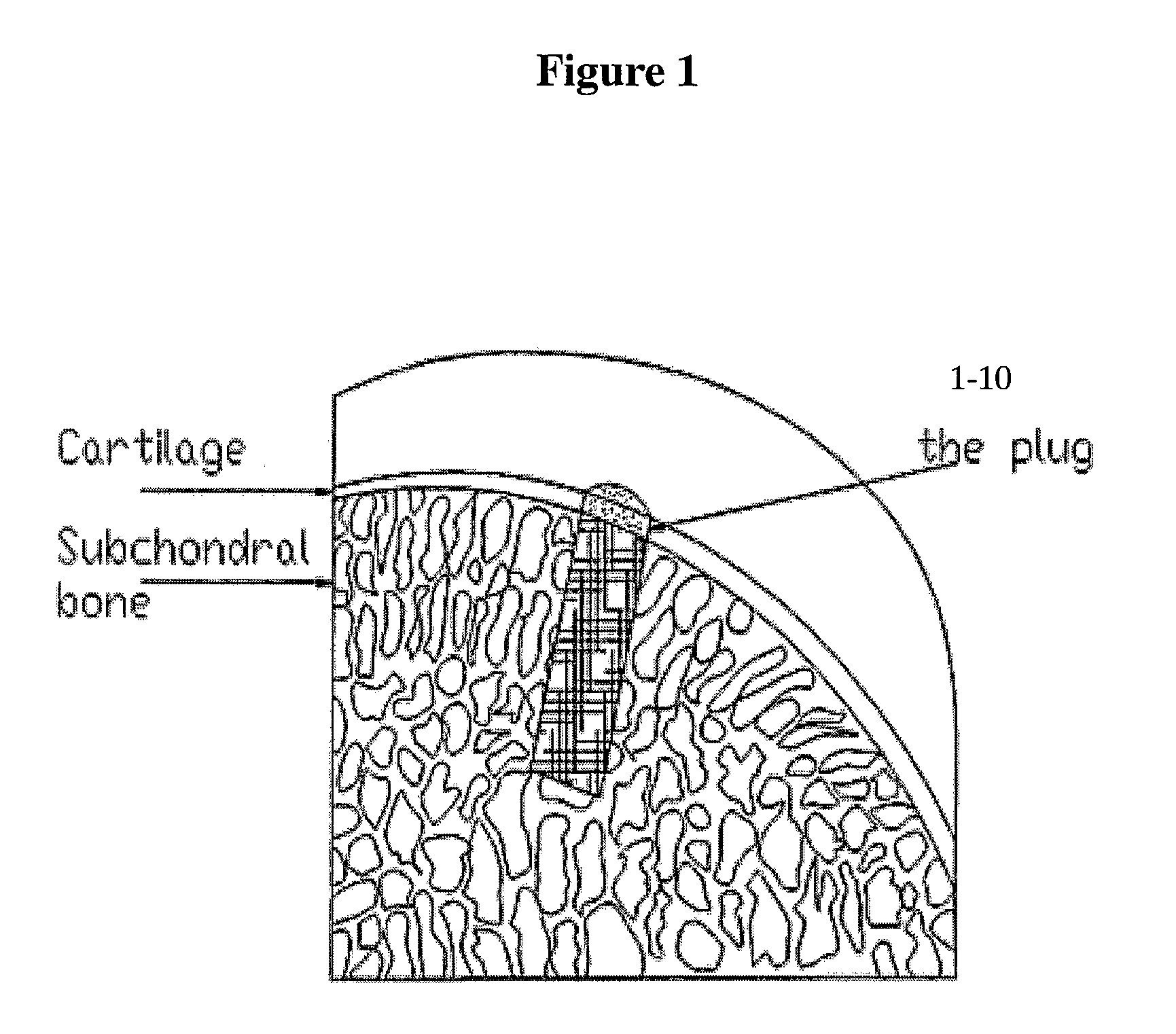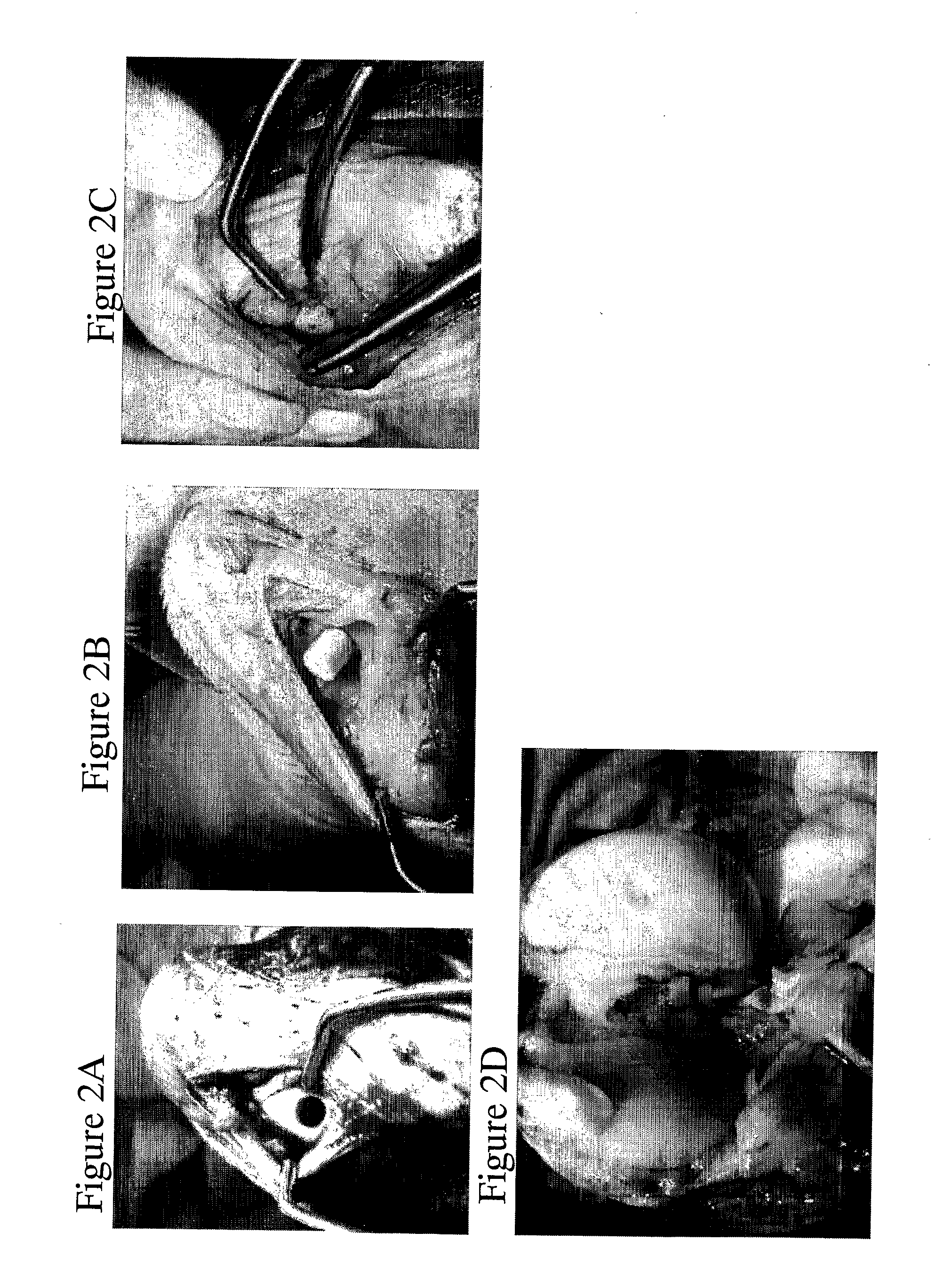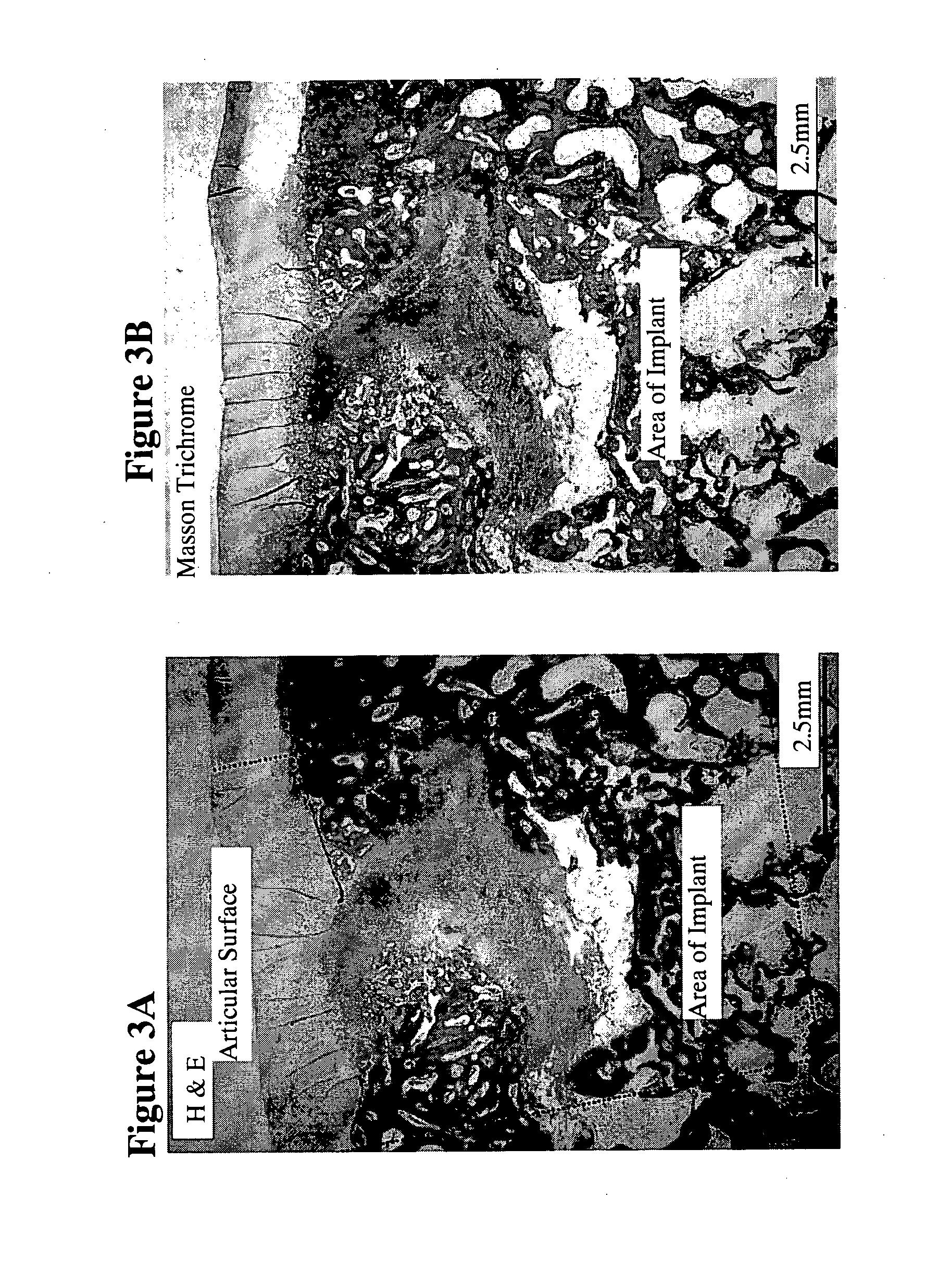Solid Forms for Tissue Repair
a tissue repair and solid form technology, applied in the field of solid form tissue repair, can solve the problems of limited autologous bone tissue, stress shielding to the surrounding bone, fatigue failure of implants, etc., and achieve the effect of enhancing cartilage or bone formation, regeneration or enhancemen
- Summary
- Abstract
- Description
- Claims
- Application Information
AI Technical Summary
Benefits of technology
Problems solved by technology
Method used
Image
Examples
example 1
Applications of Coralline-Based Scaffolding of this Invention
[0311]Coralline-based scaffolding of this invention may be inserted into cartilage, bone or a combination thereof, in a subject in need thereof.
[0312]In some embodiments, such placement will include drilling in the area to expose the site in which implantation is desired, and tight fitting of the scaffold within the defect / site.
[0313]For implantation for cartilage repair, regeneration, etc., scaffolds are implanted in the desired cartilage site, and within proximally located bone, so that, in this way, the coral scaffold is grafted through two types of tissue, cartilage and bone. FIG. 1 schematically depicts orientation of a cartoon of a scaffold of this invention within a site of cartilage / bone repair.
[0314]Scaffolds may be prepared according to any embodiment as described herein, as will be appreciated by the skilled artisan.
[0315]The scaffolds are envisioned for use in veterinary applications, as well as in the treatmen...
example 2
Restoration of an Osteochondral Defect
[0317]Restoration of an osteochondral defect was performed in mature goats using rounded implants which were 6 mm in diameter and 8 mm in length. A 5.5×8 mm core of cartilage and bone tissue was drilled out of the medial femoral condyle of each goat (FIG. 2A) and the implant pressed fit into the site of cartilage and bone repair (FIGS. 2B and 2C).
[0318]Some animals harvested at 2.5 weeks post surgery exhibited signs that the implant was well incorporated into the native tissue and cartilage tissue was developed proximal to implant, moreover signs of vascularisation were seen (FIG. 2C).
[0319]A group of animals were sacrificed and tissue was harvested from the implant site 9 weeks post surgery. H&E and Masson Trichrome histological evaluation of the tissue (FIGS. 3A and 3B, respectively) showed that area of the implant was replaced by newly formed cartilage and woven bone and the cartilage was smooth and almost completely regenerated. Safranin O s...
example 3
Preparation of a Multiphasic Solid Aragonite Scaffold
[0320]To create a multi-phasic scaffold varying in terms of the pore volume (porosity) of each phase, and / or varying in terms of the diameter of the voids present in each phase, plugs of 5.2 mm in diameter and 7.5 mm in length were positioned within a silicon holder whereby only the top 1 mm of the plug was exposed, and the holder with the plug was placed in an inverted position, and immersed into the reaction mixture, such that only the top 1 mm of the plug was in direct contact with the mixture.
[0321]The plug was first immersed in a 5% disodium salt solution for two hours at room temperature, followed by addition of a 99% formic acid solution to yield a final concentration of 0.5%, where the plugs were immersed again in the solution for an additional 20 minutes. The mixture was discharged and the plugs were washed in distilled water overnight, under conditions of approximately 0.2-0.00001 Bar pressure via the application of a va...
PUM
| Property | Measurement | Unit |
|---|---|---|
| Temperature | aaaaa | aaaaa |
| Thickness | aaaaa | aaaaa |
| Height | aaaaa | aaaaa |
Abstract
Description
Claims
Application Information
 Login to View More
Login to View More - R&D
- Intellectual Property
- Life Sciences
- Materials
- Tech Scout
- Unparalleled Data Quality
- Higher Quality Content
- 60% Fewer Hallucinations
Browse by: Latest US Patents, China's latest patents, Technical Efficacy Thesaurus, Application Domain, Technology Topic, Popular Technical Reports.
© 2025 PatSnap. All rights reserved.Legal|Privacy policy|Modern Slavery Act Transparency Statement|Sitemap|About US| Contact US: help@patsnap.com



